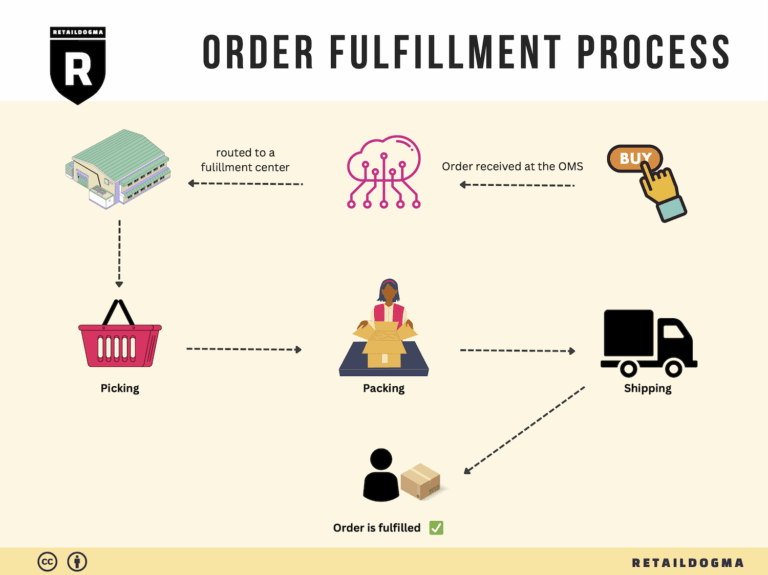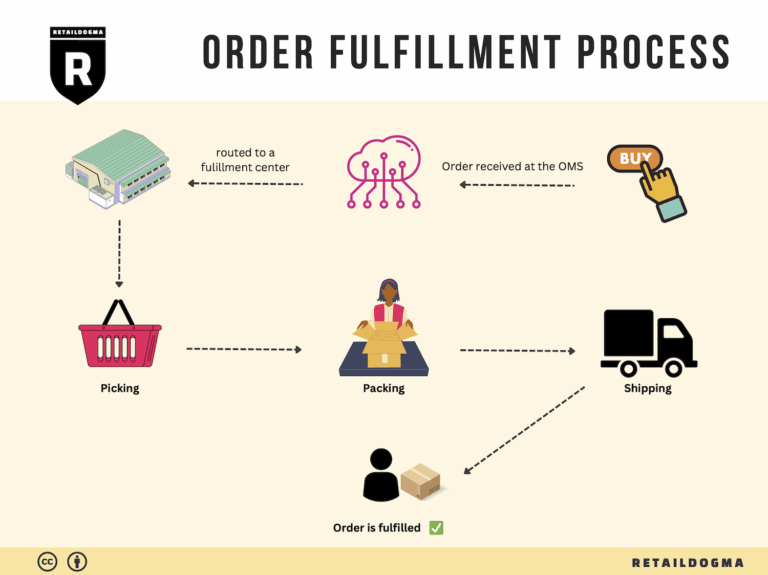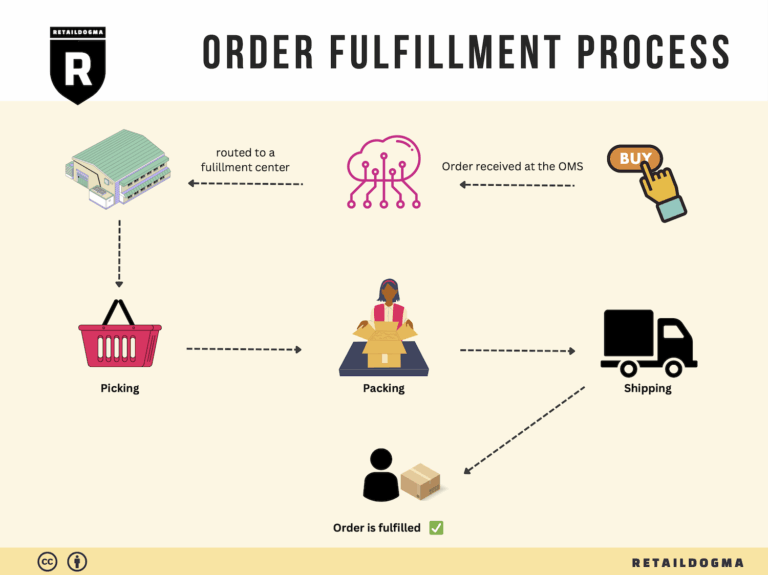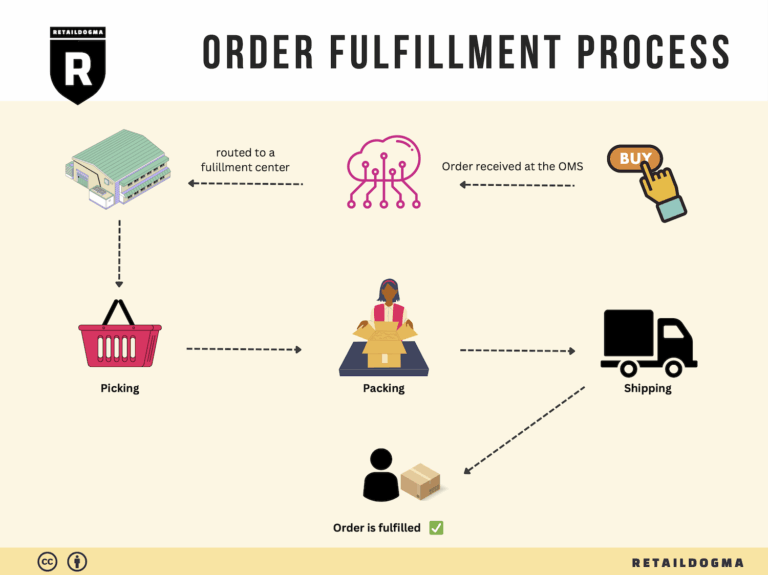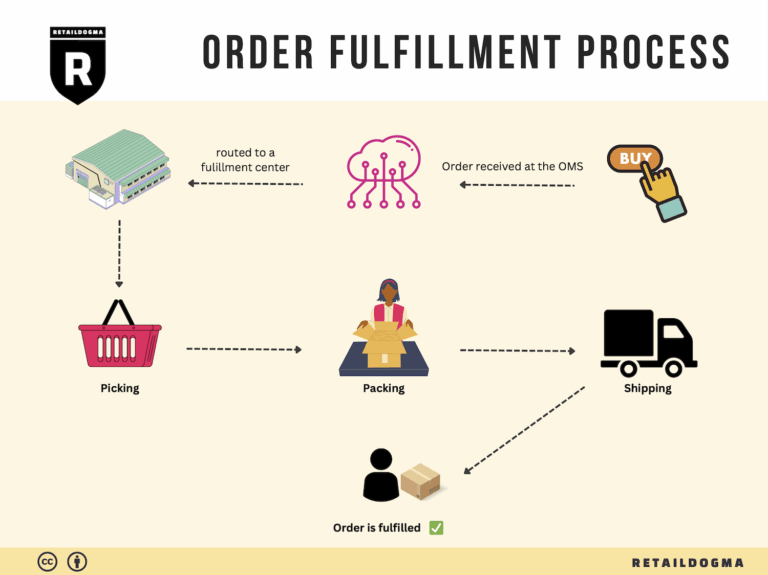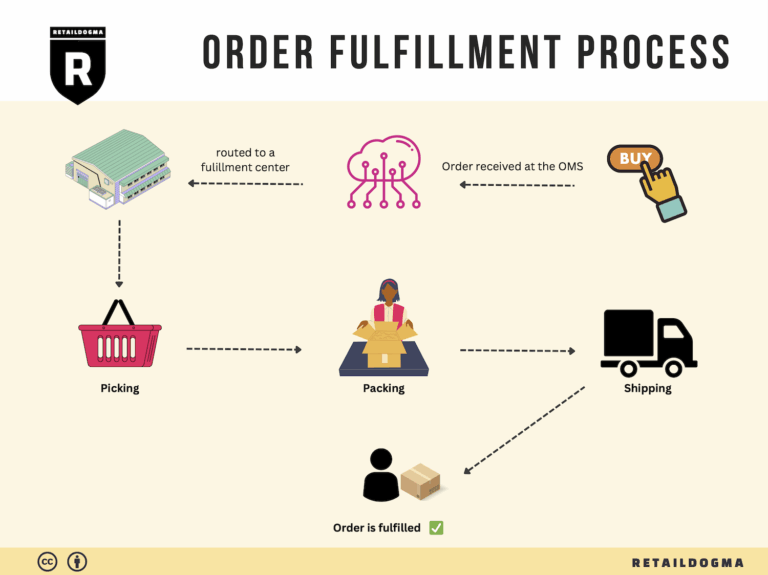Ecommerce Fulfillment Services: The Ultimate Guide (2025)
What is E-commerce Fulfillment? An Introduction for Growing Businesses
Understanding E-commerce Fulfillment: A Lifeline for Growing Businesses
As an e-commerce business owner, you know that the thrill of making a sale can quickly be overshadowed by the challenges of packing and shipping orders. The pressure to deliver products promptly while managing inventory, processing returns, and ensuring customer satisfaction can be overwhelming. This is where fulfillment comes into play—a critical component of your operations that can make or break your business.
At its core, fulfillment is the process of getting a product from your warehouse (or a partner’s) to your customer’s doorstep. It encompasses everything from receiving inventory and storing products to picking, packing, and shipping orders. For growing businesses, mastering this process is essential for scaling operations and maintaining a positive customer experience.
In this guide, we will explore various fulfillment models that can ease your burden, such as Third-Party Logistics (3PL) and Fulfillment by Amazon (FBA). Each model has unique advantages and can be tailored to fit your specific business needs. We will delve into the core services offered by fulfillment partners, including inventory management, order processing, and customer service, to help you understand what you can expect from a reliable logistics provider.
Choosing the right fulfillment partner is a crucial decision that can significantly impact your operational efficiency and bottom line. We’ll outline key factors to consider, such as location, technology capabilities, and scalability, to ensure you make an informed choice. Additionally, we’ll provide insights into pricing structures and how to assess the cost-effectiveness of various fulfillment options.
Our goal with this guide is to empower you to make smart decisions about your logistics strategy. By understanding the nuances of e-commerce fulfillment and leveraging the right partners, you can streamline your operations, reduce stress, and focus on growing your business. Whether you are just starting or looking to optimize your existing processes, this comprehensive overview will serve as your roadmap to successful fulfillment in the dynamic world of e-commerce.
What You’ll Learn In This Guide
- What is E-commerce Fulfillment? An Introduction for Growing Businesses
- The Order Fulfillment Process: From ‘Buy’ Button to Customer’s Door
- Comparing Fulfillment Models: In-House vs. 3PL vs. Dropshipping
- A Deep Dive into Amazon FBA: Pros, Cons, and Who It’s For
- Core Services Offered by Fulfillment Centers
- How to Choose a Fulfillment Partner: A 6-Point Checklist
- Understanding Fulfillment Pricing: A Breakdown of Common Fees
- Frequently Asked Questions (FAQs) about Fulfillment
- Conclusion: Is Outsourcing Fulfillment the Right Move for Your Business?
- Important Disclaimer
The Order Fulfillment Process: From ‘Buy’ Button to Customer’s Door
1. Receiving Inventory
The order fulfillment process begins with receiving inventory at the fulfillment center. During this stage, products arrive through the inbound dock, where they are unloaded, sorted, and documented. Key personnel or systems check the incoming shipments against purchase orders to ensure accuracy. This step is critical as it establishes the foundation for inventory management. An important term associated with this stage is SKU (Stock Keeping Unit), which is a unique identifier for each product. Properly managing SKUs during receiving helps maintain organized records and facilitates future inventory tracking.
2. Warehouse Storage
Once inventory is received, it is stored within the fulfillment center. This process involves stowing items in designated areas, which can vary based on the fulfillment center’s strategy—some may group items by category while others may utilize a random storage approach. This stage is vital for optimizing space and ensuring quick retrieval when orders are placed. Advanced inventory management systems keep track of item locations through barcode scanning, enhancing efficiency. By effectively managing storage, businesses can minimize the time spent locating products, which is essential for maintaining fast order fulfillment times.
3. Order Picking
When a customer places an order, the fulfillment center generates pick lists, which detail the items needed for each order. This stage involves the picking process, where designated staff or automated systems retrieve the correct items from storage. In Amazon fulfillment centers, for instance, robots may deliver entire pods of products to picking stations, where human associates then select the required items. This method not only speeds up the process but also reduces human error. Efficient order picking is crucial as it directly impacts the accuracy and speed of order fulfillment, ensuring customers receive the correct products promptly.
4. Order Packing
After items are picked, they move to the packing stage, where they are prepared for shipment. This process includes scanning each item to confirm accuracy and placing them into appropriately sized boxes. Amazon’s fulfillment centers use a system that recommends box sizes and measures tape lengths to minimize waste, highlighting the importance of operational efficiency. Proper packing is essential as it protects products during transit and enhances customer satisfaction. An important term in this phase is packing slips, which accompany the shipment and provide customers with order details, contributing to transparency and trust in the purchasing process.
5. Shipping & Delivery
The final step in the order fulfillment process is shipping and delivery. Once packed, orders are weighed and labeled with shipping information. Fulfillment centers like Amazon utilize SLAM (Scan, Label, Apply, Manifest) machines to automate the labeling process, ensuring speed and accuracy. After packaging, items are sorted based on their destination and delivery speed, utilizing a variety of transportation methods, including trucks, planes, and even drones. This stage is critical as it determines how quickly customers receive their orders, impacting their overall shopping experience. Efficient shipping logistics can significantly enhance customer satisfaction and encourage repeat business, making it a key focus for e-commerce operations.
In conclusion, understanding and optimizing each step of the order fulfillment process is essential for e-commerce businesses aiming to scale their operations. From receiving inventory to shipping and delivery, each phase plays a vital role in ensuring that customers receive their orders accurately and on time, ultimately driving business success.
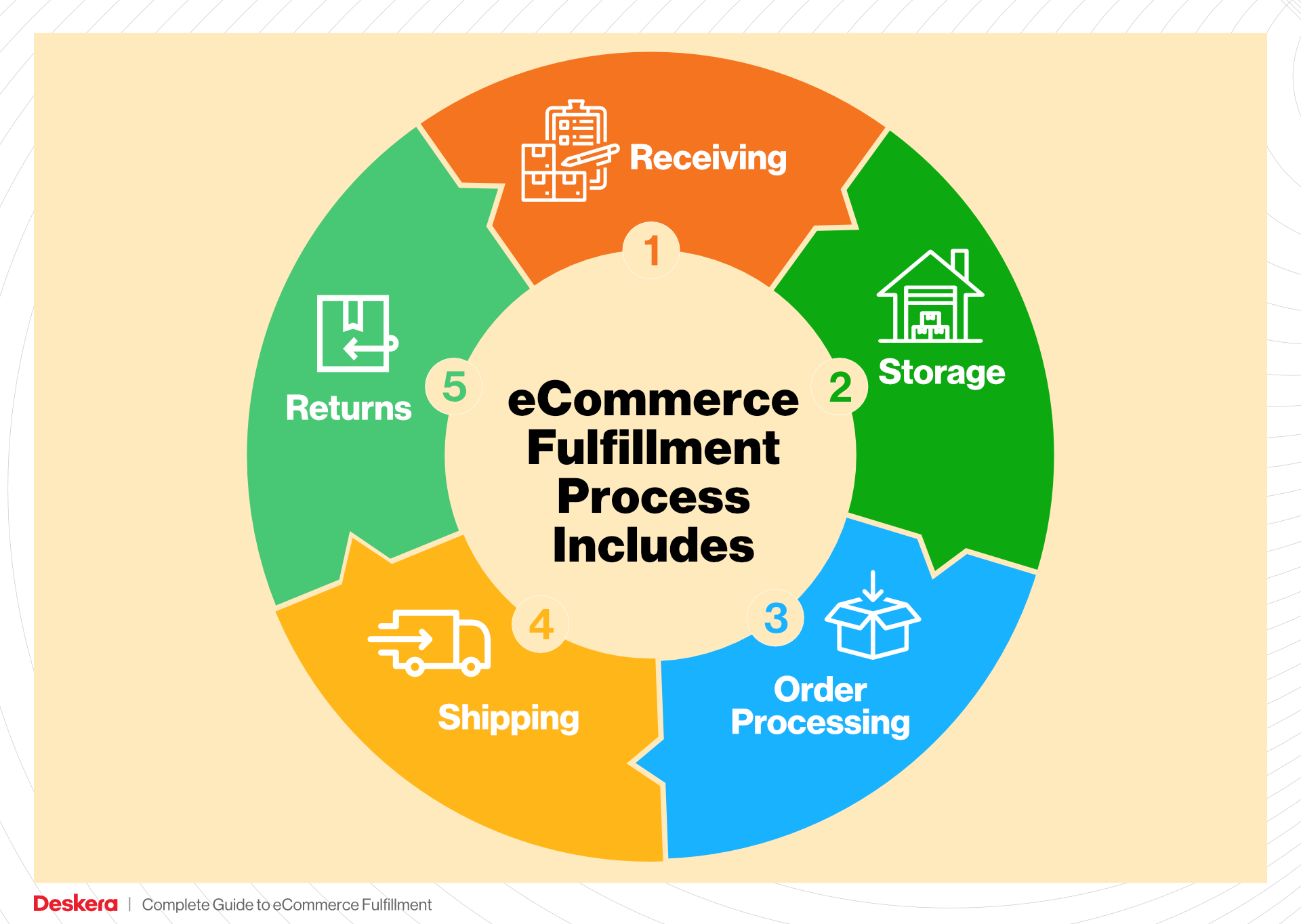
Comparing Fulfillment Models: In-House vs. 3PL vs. Dropshipping
Fulfillment Model Comparison
| Model | Who Handles Inventory | Best For (Business Stage) | Key Advantage | Key Disadvantage |
|---|---|---|---|---|
| In-House Fulfillment | The business itself | Established businesses with stable sales | Full control over inventory and processes | High overhead costs and resource demands |
| Third-Party Logistics (3PL) | External logistics provider | Growing businesses looking to scale | Access to expertise and infrastructure | Less control over inventory management |
| Dropshipping | Supplier or manufacturer | Startups or businesses testing markets | Low upfront investment and risk | Lower profit margins and reliance on suppliers |
In-House Fulfillment
In-house fulfillment involves managing the entire order fulfillment process within the business itself. This includes receiving inventory, storing products, picking and packing orders, and shipping them directly to customers. This model is best suited for established businesses that have a stable sales volume and can afford the necessary infrastructure, such as warehouse space, inventory management systems, and staffing. The key advantage of in-house fulfillment is the level of control it provides; businesses can oversee every aspect of the process, which often leads to improved quality control, faster shipping times, and a better understanding of their inventory. However, the major disadvantage is the high overhead costs associated with maintaining a warehouse, hiring staff, and managing logistics. Additionally, the complexities of inventory management can strain resources, especially if order volumes fluctuate.
Third-Party Logistics (3PL)
Third-party logistics (3PL) is a fulfillment model where businesses outsource their logistics operations to specialized providers. These providers handle all aspects of the fulfillment process, from warehousing and inventory management to order processing and shipping. This model is particularly beneficial for growing businesses looking to scale quickly without the burden of managing logistics themselves. A significant advantage of 3PL is the access to industry expertise and advanced logistics infrastructure that many small to medium-sized businesses may lack. 3PL providers often have established relationships with carriers, which can lead to reduced shipping costs and improved delivery times. However, the downside is that businesses may experience less control over their inventory and fulfillment processes, which can lead to challenges in ensuring quality and responsiveness to customer needs. Furthermore, relying on a third party can introduce complexities in communication and integration with the business’s systems.
Dropshipping
Dropshipping is a fulfillment model where the retailer does not hold inventory but instead relies on suppliers to fulfill orders directly to customers. When a customer places an order, the retailer forwards the order details to the supplier, who then ships the product directly to the customer. This model is particularly appealing for startups or businesses testing new markets, as it requires minimal upfront investment and reduces the risk of holding unsold inventory. The key advantage of dropshipping is the low operational overhead, allowing entrepreneurs to focus on marketing and customer acquisition rather than logistics. However, dropshipping also comes with significant drawbacks, including lower profit margins due to reliance on supplier pricing and potential delays in shipping and inventory management. Additionally, businesses must depend heavily on their suppliers for product quality and fulfillment speed, which can negatively impact customer satisfaction if issues arise.
Conclusion
Choosing the right fulfillment model is crucial for scaling an e-commerce business. Each model has its unique advantages and disadvantages, and the best choice often depends on the specific needs, stage, and goals of the business. In-house fulfillment offers control and quality assurance but comes with high costs. 3PL provides scalability and expertise but at the expense of some control. Dropshipping minimizes risk and investment but can lead to lower margins and reliance on suppliers. Understanding these dynamics will empower e-commerce business owners to make informed decisions that align with their operational capabilities and strategic objectives.
A Deep Dive into Amazon FBA: Pros, Cons, and Who It’s For
Understanding Fulfillment by Amazon (FBA)
Fulfillment by Amazon (FBA) is a service provided by Amazon that allows sellers to store their products in Amazon’s fulfillment centers. Amazon then takes care of storage, packaging, shipping, and customer service on behalf of the seller. This service is particularly advantageous for e-commerce business owners looking to scale their operations with the backing of Amazon’s extensive logistics network.
When a customer makes a purchase, Amazon handles the entire fulfillment process—from picking the item from the warehouse to packaging it and shipping it directly to the customer. In addition, Amazon manages returns and customer inquiries related to these orders. This allows sellers to focus on other aspects of their business, such as marketing and product development, while benefiting from Amazon’s vast reach and efficiency.
How FBA Works
-
Inventory Management: Sellers send their products to Amazon fulfillment centers. Once the inventory arrives, Amazon takes over the management, including storage and organization within their warehouses.
-
Order Processing: When a customer places an order for a product that is fulfilled by Amazon, the order is automatically processed by the system. Amazon’s technology ensures that the right item is picked from the right location.
-
Packaging and Shipping: After picking the item, Amazon packs it in appropriate packaging and applies shipping labels. The process is designed for efficiency, often using automated systems to minimize human error and maximize speed.
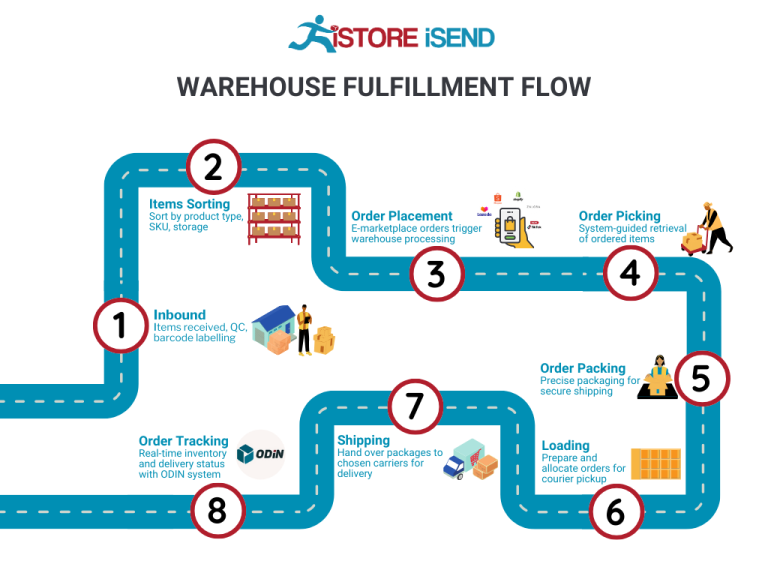
-
Customer Service and Returns: Amazon also handles customer service inquiries and manages returns. This includes processing refunds and exchanges, which can significantly reduce the workload for sellers.
-
Multi-Channel Fulfillment: Sellers can also use FBA to fulfill orders from other sales channels, such as their own website or other marketplaces, thereby integrating their operations under a single fulfillment solution.
Pros of Fulfillment by Amazon (FBA)
-
Prime Eligibility: Products fulfilled by Amazon are eligible for Amazon Prime, which is a massive advantage. Prime members often prefer Prime-eligible products due to the benefits of fast and free shipping, leading to increased sales potential.
-
Customer Trust: Leveraging Amazon’s brand reputation instills confidence in customers. Many buyers trust Amazon’s fulfillment process, believing they will receive their orders promptly and without hassle, which can lead to higher conversion rates for sellers.
-
Multi-Channel Fulfillment: FBA allows sellers to fulfill orders from various platforms, not just Amazon. This flexibility can streamline operations and improve efficiency, as all inventory management can be centralized.
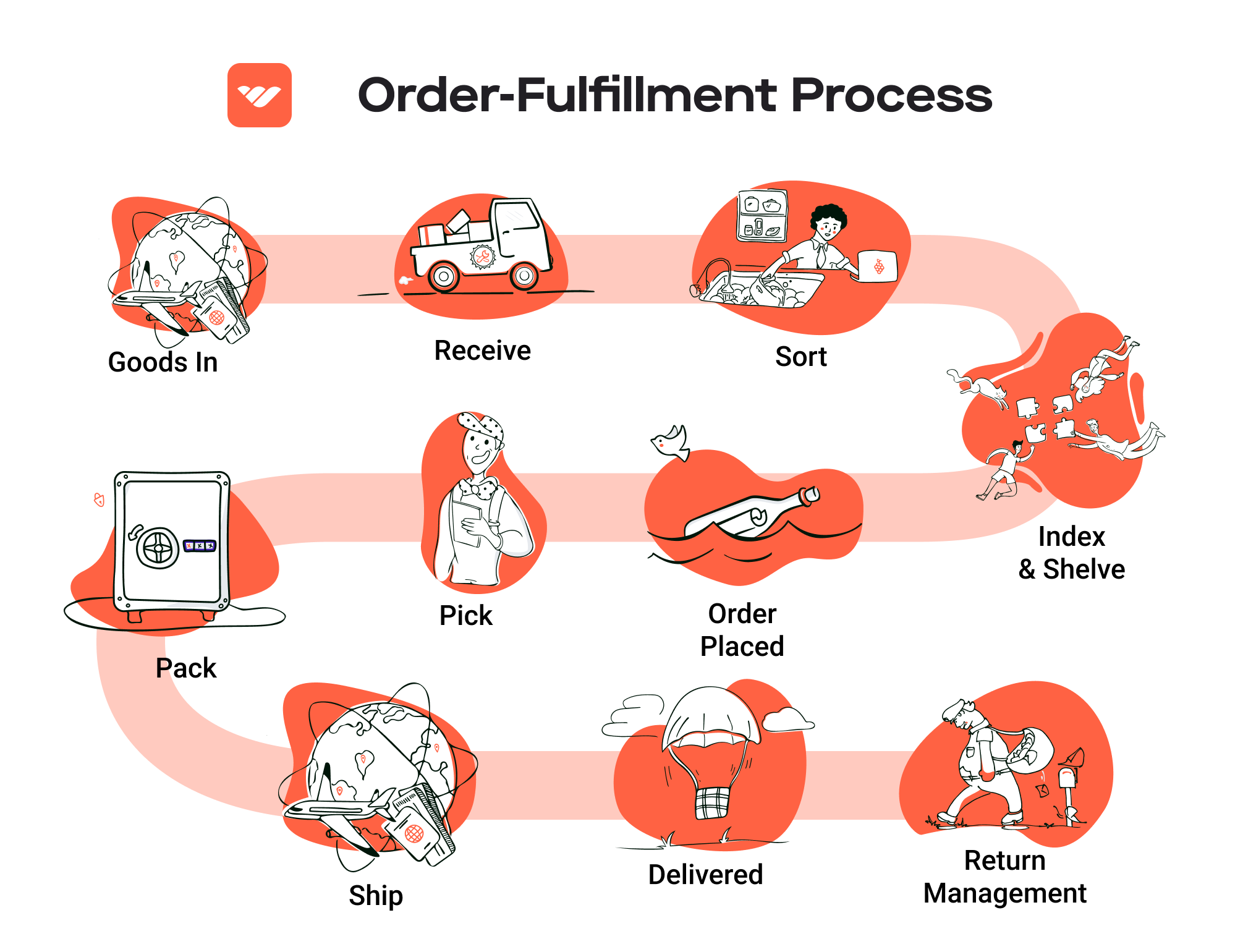
-
Scalability: As your business grows, FBA can easily scale with you. You don’t have to worry about warehousing or logistics, allowing you to focus on scaling your product offerings and marketing.
-
Reduced Workload: FBA takes care of much of the logistical burden, including storage, packing, and shipping. This allows sellers to devote more time to other important business areas, such as product development and customer engagement.
Cons of Fulfillment by Amazon (FBA)
-
High Fees: While FBA offers numerous benefits, it also comes with substantial fees. These can include storage fees, fulfillment fees, and additional costs for long-term storage. For businesses with thin margins, these costs can quickly add up.
-
Strict Inventory Rules: Amazon has specific rules regarding inventory management, including limits on storage space and requirements for labeling and packaging. Sellers must adhere to these guidelines or risk penalties, which can be cumbersome.
-
Commingling Risks: Amazon often commingles inventory from different sellers, meaning that the products are mixed together in the warehouse. This can lead to issues if a seller receives returns or damaged products that do not belong to them, complicating inventory management.
-
Loss of Control: By using FBA, sellers relinquish a degree of control over their inventory and shipping processes. This can be a concern for businesses that prefer to manage their operations closely or those with unique product requirements.
-
Potential for Stockouts: If a seller’s inventory runs low, it can lead to stockouts, resulting in missed sales opportunities. Sellers must monitor their inventory levels closely to avoid running out of stock, especially during peak seasons.
Who is FBA Best For?
FBA is particularly well-suited for:
-
Small to Medium-Sized Businesses: Sellers who do not have the capacity or resources to manage their own warehousing and logistics can benefit significantly from FBA.
-
E-commerce Entrepreneurs: Those looking to scale quickly without the burden of logistics will find FBA to be an appealing option, especially if they are already selling on Amazon.
-
Product-Based Businesses: Companies that have physical products and want to take advantage of Amazon’s massive customer base and fulfillment capabilities will see substantial benefits.
-
Sellers with High Demand Products: If a seller has products that are consistently in high demand, FBA can help them manage order volume efficiently, allowing for rapid growth.
In conclusion, Fulfillment by Amazon offers a powerful solution for e-commerce sellers seeking to streamline their operations and enhance their customer service. However, it’s crucial for potential users to weigh the benefits against the costs and constraints associated with the program. Understanding these dynamics will help sellers make informed decisions that align with their business goals.
Core Services Offered by Fulfillment Centers
Inventory Management & Warehousing
Inventory management and warehousing are foundational services provided by fulfillment centers that play a critical role in the e-commerce supply chain. This service encompasses the receipt, storage, and tracking of inventory until it is needed for order fulfillment. Fulfillment centers utilize advanced technology, such as barcode scanning and inventory management software, to ensure that products are accurately logged and easily retrievable.
The primary benefit of effective inventory management is improved efficiency. By centralizing inventory in a fulfillment center, e-commerce businesses can maintain real-time visibility of stock levels, reducing the risk of stockouts or overstock situations. This precision allows businesses to make informed purchasing decisions and optimize their inventory turnover rates. Additionally, fulfillment centers are strategically located to minimize shipping times and costs, enabling faster delivery to customers.
Pick and Pack Services
Pick and pack services are essential for ensuring that customer orders are fulfilled accurately and efficiently. This process involves selecting items from storage (picking) and then packaging them for shipment (packing). Fulfillment centers employ a combination of automated systems and skilled labor to streamline this process.
The benefits of pick and pack services are manifold. Firstly, they significantly reduce the time it takes to fulfill orders, which is critical in today’s fast-paced e-commerce environment where customers expect rapid delivery. By utilizing technology such as pick-to-light systems or automated guided vehicles, fulfillment centers can enhance picking accuracy and speed. Furthermore, by outsourcing pick and pack operations, e-commerce businesses can focus on core activities such as marketing and product development, rather than the complexities of order fulfillment. This not only increases operational efficiency but also improves customer satisfaction through timely and accurate deliveries.
Kitting and Assembly
Kitting and assembly services involve the grouping of individual items into ready-to-ship sets or bundles, which can be particularly beneficial for e-commerce businesses that offer promotional items, gift sets, or subscription boxes. This process may include assembling products, adding labels, or packaging items in a specific way to meet customer requirements or enhance the product’s appeal.
The key advantage of kitting and assembly services is the ability to offer customized product options that can differentiate a brand in a crowded market. By providing bundled products, businesses can increase their average order value and improve the customer experience by delivering ready-to-use solutions. Moreover, fulfillment centers that offer kitting services can reduce the time spent on these tasks, allowing businesses to respond more rapidly to market demands and seasonal trends. This agility can be a significant competitive advantage, especially during peak shopping seasons.
Returns Management (Reverse Logistics)
Returns management, or reverse logistics, is a vital service offered by fulfillment centers that focuses on efficiently handling product returns. This process includes receiving returned items, inspecting their condition, restocking them if they are sellable, and processing refunds or exchanges. Effective returns management is crucial for maintaining customer trust and satisfaction.
The benefits of a well-managed returns process are substantial. First, it enhances the overall customer experience by providing a seamless return process, which can lead to increased customer loyalty and repeat purchases. Furthermore, efficient returns management can help businesses recover value from returned items, whether through restocking, refurbishment, or liquidation. By utilizing a fulfillment center’s expertise in reverse logistics, e-commerce businesses can minimize the operational burden associated with returns, allowing them to focus on growth and customer engagement.
In summary, fulfillment centers offer a suite of core services that are essential for scaling e-commerce operations. From inventory management and warehousing to pick and pack services, kitting and assembly, and returns management, these services provide the efficiency, accuracy, and flexibility necessary for businesses to thrive in a competitive marketplace. By leveraging these capabilities, e-commerce owners and operations managers can optimize their logistics, enhance customer satisfaction, and ultimately drive sales growth.
How to Choose a Fulfillment Partner: A 6-Point Checklist
Location & Warehouse Network
Importance: The geographical location of your fulfillment partner’s warehouses significantly impacts shipping times, costs, and overall service quality. A well-distributed network allows for faster delivery to customers, which is critical for maintaining high satisfaction levels.
Questions to Ask:
– Where are your warehouses located, and how does that align with my customer base?
– Do you have multiple facilities to ensure coverage across key regions?
– What are your average shipping times to major metropolitan areas?
– How do you handle logistics for international shipping if my customer base expands globally?
Technology & Integrations
Importance: In today’s digital marketplace, a fulfillment partner’s technology stack can make or break your operations. Efficient order processing, real-time inventory tracking, and seamless integrations with e-commerce platforms are vital for smooth operations.
Questions to Ask:
– What technology do you use for inventory management and order processing?
– Can your systems integrate with my existing e-commerce platforms (like Shopify, WooCommerce, etc.)?
– Do you provide real-time tracking updates for orders, and how are these communicated to customers?
– How do you ensure data security and compliance with regulations such as GDPR?
Specializations (e.g., Cold Storage, Oversized Items)
Importance: Different businesses have unique needs based on the products they sell. If your product line includes items that require special handling—such as perishables or oversized goods—it’s crucial to partner with a fulfillment center that has the appropriate capabilities.
Questions to Ask:
– Do you have specialized facilities for cold storage or handling fragile items?
– What experience do you have with products similar to mine?
– How do you ensure compliance with safety and handling regulations for specialized items?
– Can you accommodate seasonal fluctuations in inventory, especially for perishable goods?
Scalability & Capacity
Importance: As your business grows, your fulfillment needs will evolve. A partner that can scale operations in line with your growth trajectory will save you time and money and help maintain service levels as order volumes fluctuate.
Questions to Ask:
– What is your current capacity, and how quickly can you scale up in response to increased demand?
– Have you handled peak seasons for other clients? How do you manage increased order volumes during these times?
– What processes do you have in place to ensure that scaling does not compromise quality?
– How do you handle excess inventory and returns during slower sales periods?
Pricing and Contracts
Importance: Understanding the cost structure is vital for managing your margins. Transparent pricing and favorable contract terms can prevent unexpected expenses and allow for better budgeting.
Questions to Ask:
– Can you provide a detailed breakdown of your pricing structure, including storage, picking, packing, and shipping fees?
– Are there any hidden costs I should be aware of, such as for returns or special handling?
– What is the duration of your contracts, and what are the terms for renewal or cancellation?
– Do you offer volume discounts or incentives for long-term partnerships?
Customer Support & Reviews
Importance: Reliable customer support is essential for resolving issues quickly, which can prevent disruptions in your operations. Reviews from other clients can provide valuable insights into the partner’s reliability and service quality.
Questions to Ask:
– What levels of customer support do you offer? Is it available 24/7?
– How do you handle issues such as order discrepancies or shipping delays?
– Can you provide references or case studies from businesses similar to mine?
– What is your average response time for customer inquiries or issues?
Conclusion
Choosing the right fulfillment partner is a critical decision that can significantly influence your e-commerce business’s success. By carefully evaluating each of these six points, you can ensure that your partner aligns with your operational needs and growth objectives. Take the time to ask the right questions and assess potential partners thoroughly to build a solid foundation for your logistics strategy. A well-chosen fulfillment partner not only enhances efficiency but also contributes to customer satisfaction and overall business growth.
Understanding Fulfillment Pricing: A Breakdown of Common Fees
Initial Setup Fees
When starting with a fulfillment service, many providers, including Amazon, may charge an initial setup fee. This fee covers the administrative costs associated with onboarding your business to their platform. The setup process typically includes account creation, integration with your e-commerce platform, and initial inventory setup.
The calculation for this fee can vary widely based on the complexity of your integration and the services included. For instance, if you require additional services like custom packaging or advanced reporting tools, the setup fee could be higher. It’s essential to discuss your specific needs with the fulfillment provider to understand what the setup fee entails and how it will be calculated.
Receiving Fees
Receiving fees are charged each time your inventory is delivered to the fulfillment center. This fee covers the labor and resources needed to unload, inspect, and process your inventory into their system.
Receiving fees can vary based on the volume of inventory and the condition of the goods upon arrival. Typically, these fees are calculated per shipment or per pallet. For example, a standard rate may apply for each pallet received, while additional charges could be incurred for handling oversized or damaged items. To keep costs manageable, ensure your shipments are organized and clearly labeled to streamline the receiving process.
Storage Fees (per pallet/bin)
Storage fees are charged for the space your inventory occupies within the fulfillment center. These fees can be calculated on a monthly basis and are often based on the number of pallets or bins your products occupy.
For example, you may encounter a tiered pricing structure where the first few pallets are charged at a lower rate, while additional pallets incur a higher rate. Additionally, some fulfillment centers may charge a premium for items stored beyond a certain period, often referred to as long-term storage fees. To minimize storage costs, regularly assess your inventory turnover and consider implementing a more efficient inventory management strategy.
Pick & Pack Fees (per item/order)
Pick and pack fees are incurred each time an order is processed. This fee covers the labor involved in picking items from storage and packing them for shipment.
The calculation of pick and pack fees can vary based on the complexity of the order. For instance, a fee might be charged per item picked, with a separate fee for packing. Some providers offer flat-rate options for bulk orders, while others may charge a percentage of the total order value. To optimize these costs, consider consolidating orders where possible and reviewing your product offerings to identify high-demand items that can be stored closer to shipping locations.
Shipping Fees
Shipping fees are perhaps the most variable aspect of fulfillment pricing. These fees cover the cost of transporting the packed orders to the customer and can depend on multiple factors, including the shipping method (e.g., standard, expedited), package weight, dimensions, and destination.
Fulfillment centers often have partnerships with various shipping carriers, which can influence the rates you receive. Many providers offer discounted shipping rates due to their high shipping volume. It’s crucial to evaluate different shipping options to find the most cost-effective solution for your business. Additionally, consider utilizing multi-carrier shipping software to compare rates and optimize your shipping strategy.
Conclusion: Tips for Getting an Accurate Quote
To ensure you receive an accurate quote from a fulfillment provider, consider the following tips:
-
Provide Detailed Information: Be clear about your inventory size, order volume, and shipping needs. The more specific you are, the better the provider can tailor their quote.
-
Ask About Hidden Fees: Inquire about any additional fees that may not be included in the initial quote, such as long-term storage fees or extra charges for handling special items.
-
Negotiate Rates: Many fulfillment providers are open to negotiation, especially if you can commit to a certain volume of business. Don’t hesitate to discuss potential discounts or lower rates based on your projected order volume.
-
Request a Breakdown: Ask for a detailed breakdown of all fees, including setup, receiving, storage, pick and pack, and shipping. This transparency will help you understand where your costs are coming from.
-
Compare Providers: It’s wise to obtain quotes from multiple fulfillment centers to ensure you’re getting competitive pricing. Look beyond the base fees and consider the overall service and support offered.
By taking these steps, you can better navigate the complexities of fulfillment pricing and make informed decisions that support your business’s growth.
Frequently Asked Questions (FAQs) about Fulfillment
1. What is an Amazon Fulfillment Center?
An Amazon Fulfillment Center is a large warehouse where Amazon processes and fulfills customer orders. These centers handle various tasks, including receiving inventory, storing products, picking items for orders, packing them, and shipping them to customers.
2. How does the Fulfillment by Amazon (FBA) program work?
The FBA program allows sellers to send their products to Amazon fulfillment centers. Amazon then takes care of the entire fulfillment process, including storage, order processing, packing, shipping, and customer service. Sellers pay fees based on storage space and order fulfillment.
3. What’s the difference between a warehouse and a fulfillment center?
A warehouse primarily serves as a storage facility for goods, while a fulfillment center is focused on the order fulfillment process, including picking, packing, and shipping products directly to customers. Fulfillment centers are optimized for speed and efficiency to meet customer demand.
4. What activities take place in an Amazon fulfillment center?
Key activities include:
– Inventory Receiving: Accepting and logging incoming inventory.
– Inventory Storage: Organizing products in designated areas for easy retrieval.
– Order Receiving: Processing incoming customer orders.
– Order Picking: Selecting the correct items for each order.
– Order Packing: Preparing items for shipment, ensuring accuracy and protection.
– Order Shipping: Labeling and dispatching packages for delivery.
5. How are shipping costs determined when using Amazon fulfillment?
Shipping costs depend on various factors, including the size and weight of the package, the shipping method chosen (e.g., standard vs. expedited), and the destination. Amazon often provides discounted rates due to its volume of shipments, which can be beneficial for sellers.
6. How much do fulfillment services cost?
Fulfillment costs vary based on the provider and services offered. With FBA, sellers typically incur fees for storage, order fulfillment, and any optional services like returns handling. It’s essential for sellers to evaluate these costs against their profit margins to determine overall viability.
7. What is a 3PL (Third-Party Logistics provider)?
A 3PL is a company that provides outsourced logistics services, including warehousing, order fulfillment, and transportation. Unlike Amazon’s FBA, which is specific to Amazon sellers, 3PLs can serve various e-commerce platforms and offer more customizable logistics solutions.
8. How do I choose the right fulfillment solution for my business?
When selecting a fulfillment solution, consider factors such as:
– Scale of Operations: Your current and projected order volume.
– Cost Structure: Compare pricing models of different providers.
– Service Level: Evaluate shipping speed, accuracy, and customer service.
– Integration: Ensure the fulfillment center can integrate smoothly with your e-commerce platform.
9. What are the advantages of using Amazon fulfillment centers?
Using Amazon fulfillment centers offers several advantages, including:
– Speedy Delivery: Amazon’s extensive logistics network allows for rapid order fulfillment.
– Customer Trust: Leveraging Amazon’s brand can enhance customer confidence.
– Scalability: Easily scale operations without investing in additional warehousing or staff.
– Comprehensive Support: Amazon handles customer service and returns, saving time for sellers.
10. How can I track my inventory within Amazon fulfillment centers?
Sellers can track their inventory through the Amazon Seller Central platform, which provides real-time data on stock levels, order status, and fulfillment metrics. Regular inventory audits and using barcodes can help maintain accurate inventory records within the fulfillment center.
Conclusion: Is Outsourcing Fulfillment the Right Move for Your Business?
Evaluating the Benefits of Outsourcing Fulfillment
Outsourcing fulfillment can be a transformative decision for e-commerce businesses looking to scale efficiently. One of the primary advantages is the significant time savings it provides. By delegating the logistics of inventory management, order processing, and shipping to a fulfillment partner, business owners can redirect their focus toward strategic growth initiatives, such as marketing and product development. This shift not only enhances operational efficiency but also allows for a more agile response to market changes and customer demands.
Scalability is another compelling reason to consider outsourcing. As your business grows, so do the complexities of managing fulfillment in-house. A professional fulfillment service, like those offered by Amazon, can seamlessly accommodate increased order volumes without the need for substantial upfront investments in infrastructure or personnel. This flexibility is particularly crucial during peak seasons or promotional events when demand can spike unexpectedly.
Moreover, partnering with an expert fulfillment provider brings specialized knowledge and technology to the table. These partners are adept at optimizing inventory management, ensuring timely deliveries, and leveraging data analytics to enhance the customer experience. This expertise can lead to improved accuracy and efficiency, ultimately boosting customer satisfaction and loyalty.
However, it is vital to choose the right fulfillment partner to support your growth trajectory. Conduct thorough due diligence, considering factors such as their technology capabilities, geographical reach, and customer service standards.
Next Steps for Your Business
To determine if outsourcing fulfillment is the right move for your business, consider conducting a comprehensive audit of your current shipping process. Evaluate your operational bottlenecks, customer feedback, and overall fulfillment costs. This assessment will provide clarity on whether a fulfillment partner could enhance your logistics strategy and support your business objectives. Taking this proactive step can pave the way for informed decisions that drive growth and efficiency in your e-commerce operations.
Important Disclaimer
⚠️ Important Disclaimer
The information in this guide is for educational purposes. Fulfillment services, pricing, and platform features change frequently. Always conduct your own due diligence and consult with providers directly before making business decisions.

